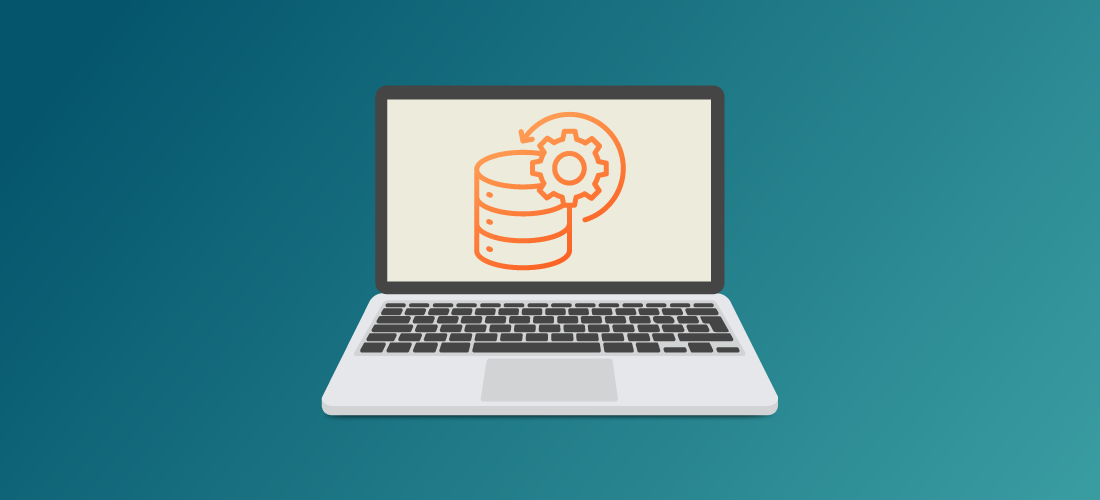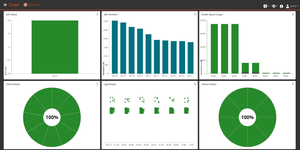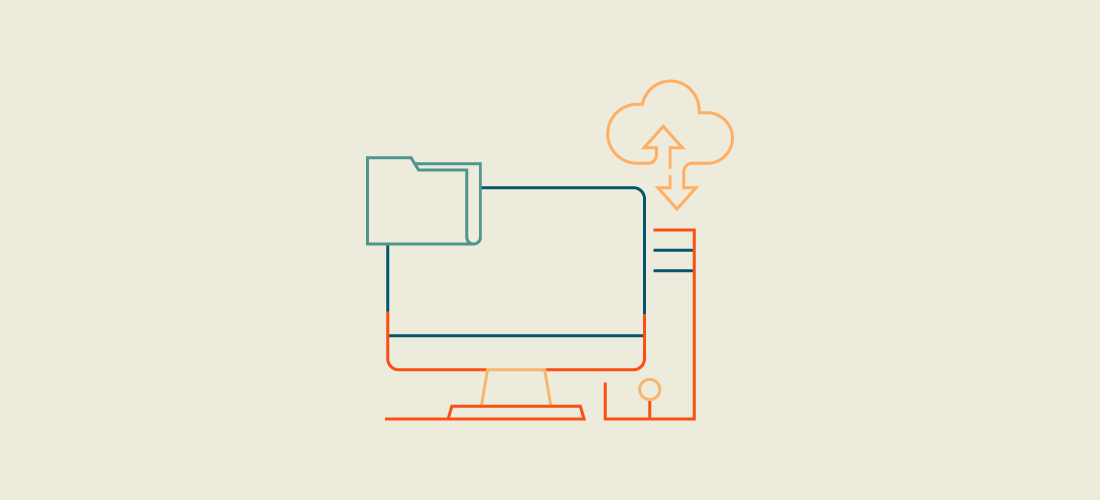
Data backup and recovery are the cornerstones of a reliable data protection strategy. They work in tandem to preserve vital business information and keep it readily accessible when needed.
Backups act as a safety net to protect against data loss and operational disruptions. However, without a well-defined recovery plan, even the most comprehensive backups fall short. Effective data protection relies on both components – a reliable backup solution to secure your data and a recovery strategy to restore it swiftly and accurately.
Get to know the essential components of data backup and recovery, the types of data sources that need to be recovered, common data recovery methods, and the biggest challenges you may face during the process.
What is data backup and recovery and why is it important?
Data backup and recovery is the process of protecting business-critical data by creating secure copies of said data and ensuring the ability to restore it when needed. In the event of data loss or needing to revert to a specific point in time, data recovery allows for the restoration of data to a reliable, known good state. It serves as an insurance policy to maintain the integrity and availability of essential information.
The difference between backup and recovery
At its core, a backup is simply a copy of your data that can be restored to a specific point in time. It serves as a snapshot that allows you to recreate your data exactly as it existed at that moment. The key feature of a true backup is its ability to restore data to a prior state.
However, a backup is useless if it cannot be recovered. A copy of your data, no matter how complete, is meaningless if you cannot restore it when needed. While the entire data backup and recovery process is important, recovery is what makes a backup system functional. Without recovery capabilities, a backup is ineffective in providing the protection and continuity your data requires.
Types of data backups
Given the diverse needs of businesses and the varying demands for data recovery, different types of backups have been developed to address different needs. Each backup method offers distinct benefits and is designed to cater to specific requirements, from complete data restoration to efficient storage management.
1. Full backup
A full backup involves copying all the data a business wants to protect in one single operation. This method creates a complete version of your data, simplifying version control and speeding up recovery, since everything is readily accessible.
The main drawback is the time required to complete a full backup. While it’s considered the most reliable method, as it guarantees everything is backed up, it is also the slowest due to the large volume of data being copied. Additionally, full backups demand more storage and network bandwidth than other methods. Technologies like data deduplication and compression can help reduce storage requirements and may even accelerate the process.
For situations where quick, straightforward recovery is needed and storage or speed isn’t a concern, full backups are highly effective. However, it’s crucial to ensure these backups are encrypted to protect your entire data estate from potential security risks.
2. Differential backup
A differential backup copies all files that have changed since the last full backup. This method includes any data that has been added or modified, without copying everything each time—only the differences from the full backup are saved.
Differential backups use less storage space compared to full backups, which can be cost-effective. But restoring from a differential backup is slower than from a full backup. Managing differential backups can also be more complex, as two files—the full backup and the latest differential—are needed for recovery. Despite this, differential backups can provide faster recovery times than incremental backups, depending on the storage medium used.
These data backups offer a way to simplify recovery while reducing the time needed for each backup. However, they grow in size as the time since the last full backup increases. Storage-saving technologies like deduplication can help mitigate this, as each differential will likely contain overlapping data from previous ones.
3. Incremental backup
Incremental backups begin with a full backup. Like differential backups, they only copy data that has changed or been added since the previous backup. However, while differential backups track changes based on the last full backup, incremental backups (after the first one) are based on changes from the most recent incremental backup.
Incremental backups typically use less storage space than both full and differential backups. To minimize storage even further, byte-level incremental backups can be used instead of block-level backups.
Among the three backup methods, incremental backups take the longest to restore. They are also more complex to manage, as restoring data requires all backups in the chain to be available.
This method is especially useful when working within a tight backup window, as it captures and transfers smaller amounts of data to the target location.
What should be recovered?
The answer to this varies for every business. A hospital, an e-commerce company and a tractor manufacturer will each have different elements that need protection. For example, patient records are likely one of the most vital assets for hospitals and healthcare providers, while payment systems and customer payment data may be central to an e-commerce company.
When malicious actors target an organization, they often focus on the core elements of operations, aiming to disrupt the most critical part of your business. While all data should be backed up and protected, the most essential parts of your business warrant the highest level of attention.
Types of data sources that typically need to be recovered
Virtual machines (VMs) – Platforms like VMware, Microsoft Hyper-V and Nutanix AHV create software-based environments that simulate physical computers, enabling multiple operating systems and applications to run independently on a single physical host.
Physical servers – Whether running Windows, Linux or Unix, physical servers are tangible hardware machines built to host and manage applications, data and network services. They offer dedicated computing resources and run operating systems and software directly on their physical components.
Databases and distributed databases – Relational database management systems (RDBMs) organize data into structured tables with rows and columns, using SQL for querying and management. Distributed databases, such as Active Directory, NoSQL databases, and frameworks like Hadoop or MongoDB, spread data across multiple nodes for different workloads.
Files – Network attached storage (NAS) provides a centralized file storage solution that connects to a network, allowing multiple users to access and share files over the network.
Containers – Containers, such as those managed by Kubernetes, encapsulate applications and their dependencies into lightweight, portable units that can run consistently across different computing environments.
Applications – Applications like Microsoft Exchange and SAP HANA are software programs designed to perform specific business functions; Microsoft Exchange manages email and collaboration services, while SAP HANA provides an in-memory database platform for real-time analytics and enterprise resource planning.
SaaS applications – Software as a service (SaaS) applications, such as Microsoft 365 and Salesforce, deliver software over the internet, allowing users to access the apps through a web browser without needing to install them on local devices.
Primary storage – Primary storage refers to the main storage area where data is actively accessed and used by a computer’s operating system and applications. It provides the fast, high-performance storage required for immediate data retrieval.
Most common data recovery methods
There are several common methods of data recovery, each suited to different scenarios and types of data loss. Whether you’re restoring a single file, an entire disk image, or recovering an entire system after a disaster, understanding these recovery methods can help you choose the best approach for protecting your data.
- File restore – The ability to recover individual files, making it particularly useful for restoring configuration artifacts, user documents, and any specific files.
- Image restore – Refers to the process of restoring an entire disk image, often associated with virtual disk images managed by a hypervisor. This method can be used to restore operating system disks or data storage disks in their entirety.
- Bare-metal restore – Typically used for protecting and restoring physical machines, bare-metal restore is similar to image restore for virtual systems. It allows the entire system to be returned to a known-good state.
- Point-in-time recovery – Most commonly used in a type of database restore that can restore data to a specific moment in time. With standard recovery techniques, a backup at 1pm and 2pm will give you two options for restore. Point-in-time recovery allows you to restore data to any exact time, such as 1:05pm, 1:37pm, or 1:45pm and 17 seconds.
- Disaster recovery: – Involves restoring entire interconnected, interdependent systems. Restoring a single server wouldn’t typically be considered “disaster recovery,” but restoring an entire datacenter or complex application comprised of multiple systems would be.
Key components of a data backup and recovery plan
A comprehensive data backup and recovery plan should address several key components that work together to protect your data from both human error and malicious attacks.
Configuration information
Systems must be properly configured to perform their intended tasks, and every configuration detail is of the utmost importance. The data itself—whether stored in a database, file system, documents, or platforms like Microsoft 365—contains vital company functions and information that needs to be protected.
Security information
Security data, including access control lists (ACLs), user passwords, account expiration dates, group memberships, and other key authentication details must be backed up for protection against data loss.
The 3-2-1 backup rule
Despite evolving technology, some long-standing best practices for data backup , such as the 3-2-1 rule, remain relevant. This rule advises always maintaining three copies of your data: two stored on different types of media (e.g., disk and tape or cloud) and one copy stored off-site.
Some newer companies may claim that the 3-2-1 rule is unnecessary, suggesting that their product can handle everything by backing up data to a private cloud with replication. However, if the vendor becomes unavailable and your data is locked in their environment, you face significant barriers to accessing your data. Best practices exist for a reason and should not be overlooked, no matter what vendors may claim.
Data immutability
Data immutability has evolved from a nice-to-have feature to a fundamental requirement in IT. Every product should incorporate effective data immutability measures. Once data is written, it should be protected from alteration by bad actors, hackers, and malware.
Immutable backups serve as a critical last line of defense against ransomware and other security threats. They reinforce the protection of your backup and recovery solutions, which are often prime targets for cybercriminals. These backups help balance the need to secure and retain data with the ongoing threat of bad actors who seek to disrupt business operations and demand ransoms.
The ideal setup for immutable backups involves air-gapped, network-inaccessible storage. For short and medium-term storage, they offer the advantages of fast disk storage combined with the security of encryption and read-only access.
The biggest challenges around data backup and recovery
A strong data backup and recovery plan is essential for maintaining business continuity, especially in environments with constant data flow. With many organizations operating 24/7, the demands on data protection and recovery strategies continue to evolve. From continuously changing data to the risk of ransomware and the need to minimize downtime, companies face significant hurdles when trying to establish secure and recoverable systems.
Data that should be protected is constantly being modified
One of the biggest challenges in data backup and recovery is the constant modification of data that needs protection. This holds particularly true for businesses that operate 24/7, such as global e-commerce sites or hospitals, where services never stop. Unlike a retail store, where operations pause when the store closes, these organizations don’t have natural downtime to back up their systems. The constant activity makes it difficult to take consistent snapshots of large, interconnected systems.
Backups give you a way to return to a specific point in time, but as the complexity of systems grows, this becomes increasingly difficult. Interconnected workflows involve numerous systems and databases that span multiple locations, making it challenging to ensure all components are captured in a single snapshot. Whether it’s databases spread across multiple floors or servers spread across different branch offices, achieving a true point-in-time backup becomes complicated when systems are spread out and always in use.
Performing the backup on the system while people are using the system
Another major challenge is managing the impact on system performance while users are actively using the system. In a 24/7 operation, users still need continuous access to the systems being backed up.
For instance, consider an e-commerce site where the average checkout time is five seconds. If the backup process consumes too many resources, causing checkout times to increase to 20 seconds, it significantly impacts the user experience.
The key is to design backup processes that protect data without degrading performance. A well-designed backup solution will allow systems to remain fully operational, even during the backup process.
Identifying who can handle backups and who can manage restorations
Part of a comprehensive data backup and recovery strategy involves clearly defining who is authorized to handle backups and who can manage restorations. This aligns with the principles of zero trust, where only individuals with the correct permissions should be able to restore data into the environment.
Granting the wrong individuals the ability to restore data can pose serious security risks, such as unauthorized access or accidental restoration of outdated or corrupted information. Strict role-based access control (RBAC) permits only those with the necessary credentials and training to perform these sensitive tasks.
Making sure that restoring data is free of ransomware
One of the top concerns in modern data recovery is ensuring that the data being restored is not infected with ransomware. Ransomware attacks have become more prevalent, and organizations are increasingly focused on preventing reinfection of their systems during the restoration process. A common risk, often referred to as “sleeping ransomware,” occurs when malicious code is dormant within backup files.
In the event of a ransomware attack, the initial response might be to avoid paying the ransom and instead, restore from backup. However, if the backup data itself is compromised by ransomware, this approach doesn’t resolve the issue—it simply reintroduces the threat into the environment.
Making sure that backup data is free from ransomware is now a primary driver for organizations when they reevaluate their data protection strategies. Businesses need confidence that their restored data won’t reinfect their systems.
Lowering RTO and RPO
Two critical metrics in disaster recovery are the recovery time objective (RTO) and recovery point objective (RPO).
RTO refers to the amount of time it takes to restore operations after a disruptive event, such as a ransomware attack or natural disaster. It measures how long it takes to move from a complete outage to being back up and running. In any well-designed system, the goal is to minimize the RTO so that the business can resume operations as quickly as possible.

Protect all your systems, applications and data.
RPO, on the other hand, measures the age of the data being restored. It represents the point in time to which your systems can be restored, indicating how much data might be lost in the recovery process. Depending on the organization, losing an hour, a day, or even a week’s worth of data could have catastrophic consequences. Reducing the RPO is crucial to minimize data loss during recovery, aiming for the smallest possible time gap between the last data backup and the point of failure.
In today’s threat landscape, simply relying on daily or nightly backups is no longer sufficient. Restoring to the previous night’s backup is often not an acceptable solution given the prevalence of cyberattacks and the importance of continuous operations. The challenge is to lower both RTO and RPO for minimal downtime and data loss. One effective strategy for achieving this is implementing continuous data protection, which consistently backs up data, allowing for near-instantaneous recovery with minimal data loss.
Conclusion
As organizations continue to evolve, so must their approaches to data protection. Comprehensive backup and recovery make up foundational parts of a data resilience strategy and allow businesses to adapt to emerging threats.
While data backup and recovery are often treated as distinct processes, their true power lies in their interdependence. It’s not just about having copies of your data but also about ensuring those copies can be efficiently and effectively restored. Together, data backup and recovery form a powerful shield against data loss, operational disruptions, and other security threats.



